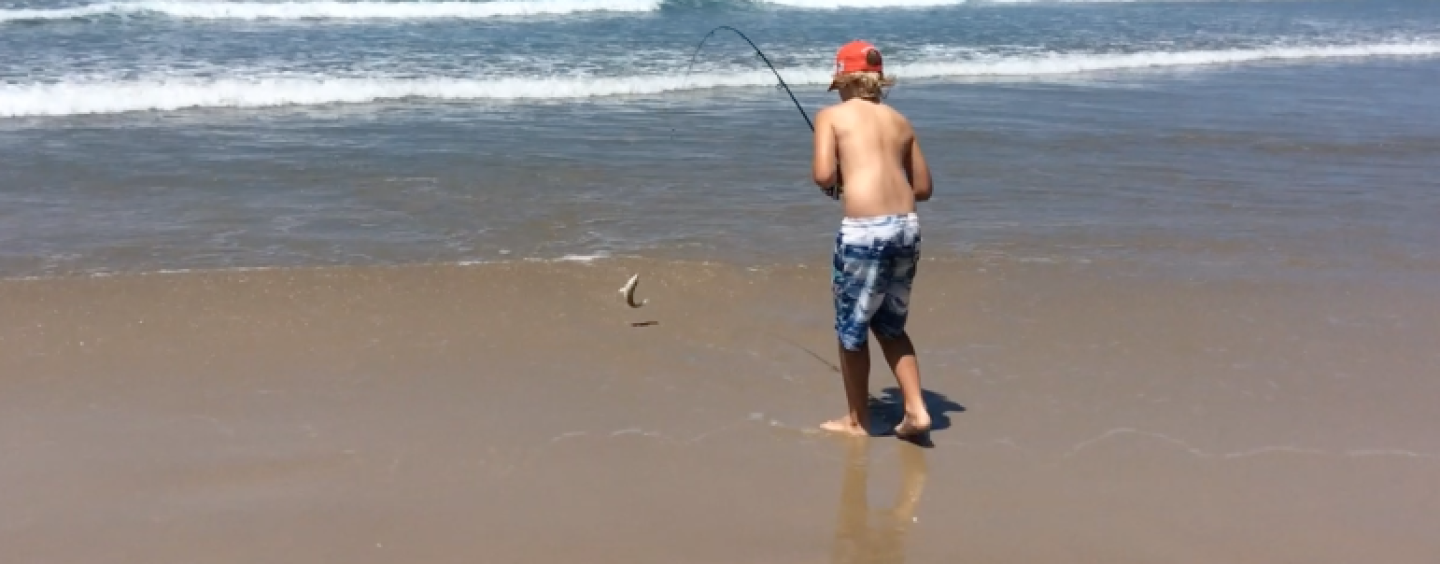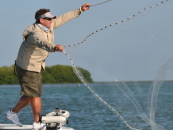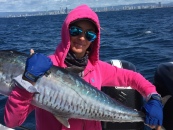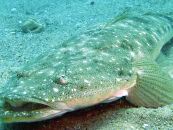Cruising the beach gutters along our coastline, you will come across a variety of fish species recognised by most Australians. The three main species encountered all around the country are bream, flathead and whiting. And it’s these three that have the common tag—bread-and-butter fish. Sure enough all three have a distinct taste of their own and all three are fun to catch.
But there’s something different about the whiting that sets it far apart from the other two. This particular species has a variety of close cousins ranging from the small diver whiting found in Moreton Bay to the common summer whiting, and then to the infamous southern King George whiting that can exceed a kilo in weight. No matter where this fish is found or caught, its taste can equal and even surpass the quality of a mangrove jack, barramundi, fingermark, coral trout or salmon. The flesh is distinctively white in colour and the texture is firm with a sweet flavour. It doesn’t have a fishy taste or smell, thus leaving a unique taste on the pallet to those who desire to eat it.
Catching whiting is an art and is certainly a lot of fun. But there are a few key points that first- or second-time anglers should take note of when targeting these delicacies of the sea.
Firstly, using the correct fishing gear is important, as you’ll need to use an outfit that is light and comfortable but not too whippy. This means a rod that is long, light and flexible on the tip but still has a bit of grunt down low towards the butt.
Most anglers in our neck of the woods prefer to use a small side cast reel known as the Alvey. It has the ability to release line to the fish when required without losing contact with your finger. You need to feel the bites therefore keeping in direct contact with the fish is important especially when surf fishing. In saying this, a Shimano spinning reel in a 2500 size is also great one to use if you are into the eggbeaters. The bites of a whiting resemble a rattle on your line. They are quick, and without this feel, your bait will be gone before you know it. The line class used should also be light of around two, three or four kilograms. Anything heavier and the fish will shy away.
There are a variety of rigs to use when targeting whiting. Depending on where you come from around the country, nearly every state uses something different. Up here in Queensland, we tend to use the simplest and by far the best rig. The running ball sinker rig with a line trace attached to the end, consists of a small ball sinker running along your main line, a small brass barrel or black crane swivel tied to the end, then a long monofilament trace of around forty centimetres in length with a chemically sharpened size-four long-shank hook tied to the end. The weight of the sinker should be changed to suit the current or sweep flowing. The bait needs to move ever so slowly in the current, therefore using a sinker too heavy would anchor it down and one too light would keep it off the bottom.
The bait used for catching whiting is the most important part, as it is when targeting every species. Using the local bait is best. Therefore, catching it yourself not only adds for a great day’s entertainment for the family, but also a great way to save money. If you were fishing in the river you would not use a pilchard or a slimey imported squid. You would use something found locally that the fish would naturally feed on. Bloodworms, sand wriggler worms, yabbies, shrimps or even small soldier crabs would be the preferred baits. On the beach, the same thinking must be applied when fishing for whiting. What small creatures live in the sand of a beach gutter? Sand or beach worms and pippies or eugaries. These two baits are by far the best and can be easily caught with a bit of practice.
By now, you have enough on the gear to use and the correct baits. But knowing where the fish are schooling is something that comes with experience. There are two kinds of beach gutters found along our coastline. We have a deep beach gutter where the lager predator fish lurk, such as mulloway, tailor, sea bream and sharks. Then we have the shallower beach gutters where the water generally does not exceed a few feet at low tide. This is where the whiting tend to school. They will wait in the run as the water breaks over the back bank and flows into the shallow water before reforming to break on the beach.
Nice clean water with a bit of white wash is a good sign to look for. The fish will camouflage themselves in this and feed on the natural food that has been washed up by the flowing and churning waters. As the tide drops, keep moving along the gutter until the tide has eventually stopped. At this point in time, the fish will generally go off the bite. Fishing the run-out tide seems to be the best, although quite a few good whiting sessions have occurred during the run-in.
If a headland is encountered along the beach, try fishing along the edge where the beach meets the rocks. Casting out just behind the break will generally produce a few tasty whiting as well. If the water is too deep, cast out just a few feet in front of the break. Sometimes the fish will school up here as the waves wash a lot of food in from the edges of the rocks. Another area to fish is at the end of a beach gutter on the run out tide. The fish will school up here and wait to ambush anything that gets washed out with the current.
Whiting can be caught along the beach all year round even during the cooler months from April through to August.
Cleaning a whiting is quite simple, all you have to do is fillet, skin, and then bone them. The best way to cook them is to coat them in seasoned flour. Then cook in a pan with a good knob of butter. It is the kind of fish that does not need any elaborate sauces to bring out the flavour.
Enjoy and good fishing!
By Paul Burt



























